"Sarmat" takes up combat duty
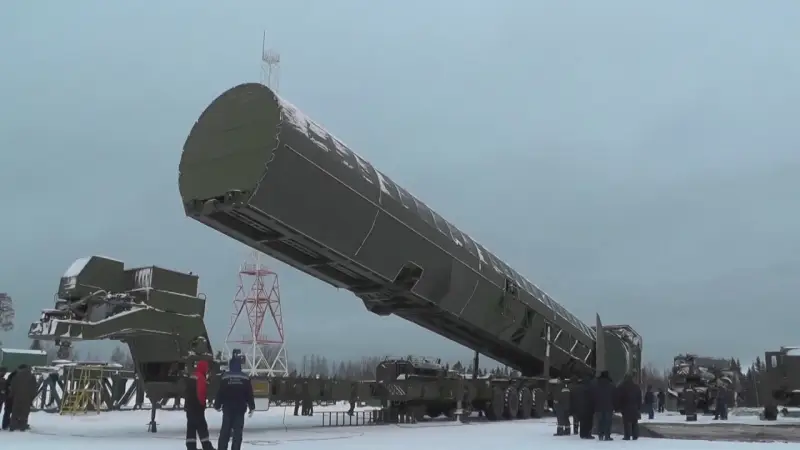
Loading a TPK with a Sarmat missile into a launcher
To date, the promising missile system with the heavy intercontinental ballistic missile "Sarmat" has reached serial production and deployment among the troops, and has also entered combat duty. In the foreseeable future, the production and deployment of such equipment will continue, and a demonstration of a new complex on duty is expected in the near future. All these processes are under the direct control of the country's top leadership, and they regularly report on successes and set new tasks.
In recent months
Over the past months, there have been several interesting and important reports that indicate the progress of the Sarmat project. Previously set goals have been achieved, and the program is entering new stages, which will be carried out in the near future and will give a final result.
Thus, on October 5, 2023, Russian President Vladimir Putin announced that work on the Sarmat product was virtually completed. All that remains is to carry out some administrative and bureaucratic procedures, after which the complex will be officially accepted into service. It is also expected to launch mass production of missiles and put them on combat duty. All these activities were planned to be completed in the near future.
In mid-December, Defense Minister Sergei Shoigu, at an extended meeting of the Board of the Ministry of Defense, announced approximate deadlines for completing all necessary measures. He considered placing the Sarmat on combat duty as a priority task for the next 2024.
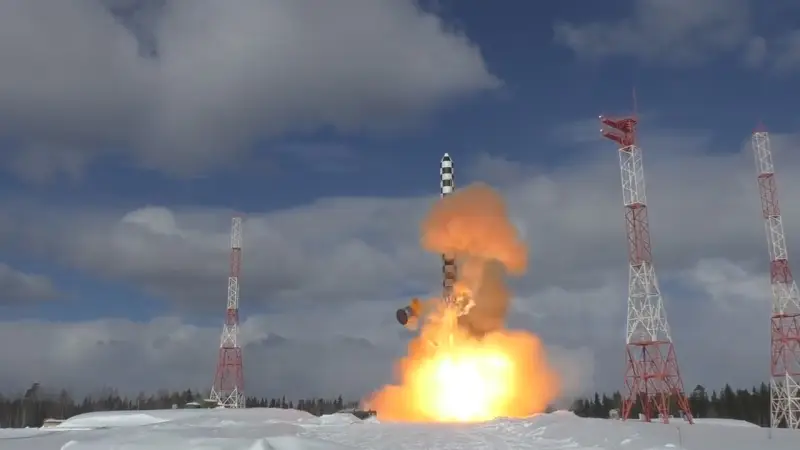
Blast test of a prototype
On January 26, at the Unified Day of Acceptance of Military Products, Deputy Minister of Defense Alexey Krivoruchko confirmed the special status of work on Sarmat and the intention to complete current work within a year. A number of other modern projects have the same high priority - the construction and delivery of Tu-160M missile carriers, the S-500 anti-aircraft missile system, new submarines of various classes, etc. to the troops.
At the Unified Acceptance Day, a report was made by Deputy Minister of Defense Timur Ivanov, who is responsible for the construction of military facilities. He announced the completion of the preparation of infrastructure for the operation of the Sarmat, Avangard and Yars complexes in parts of the Strategic Missile Forces in the Krasnoyarsk Territory, as well as in the Kaluga and Orenburg regions.
On February 20, the Minister of Defense reported to the President on the current work and recent successes of his department. In the conversation, he mentioned that the Sarmat project is “at a fairly high stage of completion.” Another promising program, Avangard, has already given the desired results - two regiments of such complexes are on combat duty. S. Shoigu noted that the potential enemy represented by Western countries knows about our successes in the field of strategic weapons.
Rocket in the troops
On the last day of February, President V. Putin addressed the Federal Assembly. In his speech, he touched on all major areas, including defense and its strategic component. The speech also made room for promising models, some of which the president announced in his address in 2018.
For the first time, the President announced at the official level that mass-produced super-heavy Sarmat ICBMs have begun to enter service with the troops. He also promised a quick demonstration of such weapons in his base areas. The head of state did not specify how exactly the promising sample would be shown.
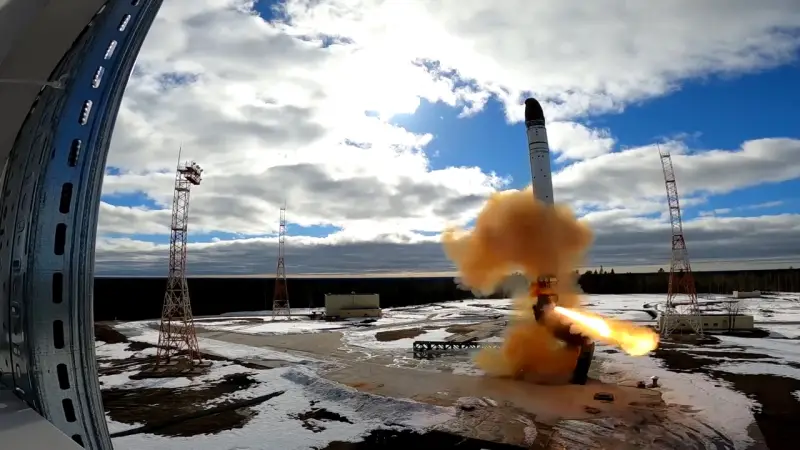
First launch of a full-fledged experimental "Sarmat"
Following the presidential address, the Minister of Defense commented on the topic of promising strategic weapons. He recalled the latest speculations and speculations of foreign officials on the topic of Russian weapons and the threat associated with them. At the same time, S. Shoigu pointed out that Russian systems are not intended to threaten foreign countries, but to attract attention and remind “that it is better not to mess with us.”
Upon completion of the tests
A promising missile system with a heavy ICBM RS-28 "Sarmat" was developed at the State Research Center named after. V.P. Makeeva (Miass, part of the Roscosmos state corporation) since the 36s. The goal of the project was to create a new complex to replace aging R-2MXNUMX Voevoda products, characterized by improved tactical and technical characteristics.
The design of the new rocket and related products was completed by the mid-2017s. Then, at the Plesetsk training ground, a silo launcher was prepared to work with prototype and prototype ICBMs. In 18-XNUMX Several rocket tests took place. They were considered successful, and based on their results, preparations for the next stages of testing continued.
The first full-fledged launch of Sarmat with a flight to a target at the Kura training ground (Kamchatka) took place on April 20, 2022. It was reported that in the near future, flight development tests will continue, and several new launches will take place. However, subsequent launches have not yet been carried out.
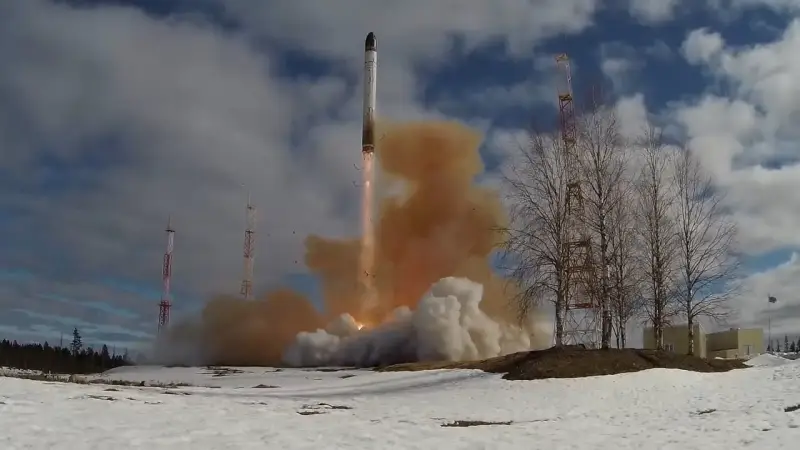
Apparently, such shortened tests were considered successful, after which work on the Sarmat program continued. At the same time, in the combat units that previously operated the Voevoda ICBMs, construction and updating of infrastructure for the operation of new products was carried out. Serial production was also being prepared, through which it was planned to ensure rearmament and combat duty in the near future.
New opportunities
According to known data, the RS-28 Sarmat product is a heavy-class intercontinental ballistic missile, its parameters and capabilities superior to existing models of its class. In missile units, the new ICBM will replace the old R-36M2 and will improve a number of key indicators of the Strategic Missile Forces, and will also have a positive effect on the processes of strategic nuclear deterrence.
"Sarmat" is built according to a three-stage scheme with a separate stage for disengaging warheads. All stages use liquid rocket engines with high thrust characteristics. They ensure the flight of a rocket weighing approx. 210 tons along the required trajectory and delivery of combat units to targets. The missile has a global range, officials said. Unofficial estimates indicate a firing range of about 15-18 thousand km.
It is known that the Sarmat carries a multiple warhead with individually targeted warheads. The thrown weight reaches 10 tons. The number and power of warheads, for obvious reasons, is unknown. Such combat equipment provides for traditional algorithms for using and hitting targets.
In the future, Sarmat will receive fundamentally new combat capabilities. Missiles of this type should become standard carriers of the Avangard hypersonic glide combat unit. It is assumed that the RS-28 will be able to carry several such products. Hypersonic warheads will ensure guaranteed penetration of modern and future missile defenses of a potential enemy.
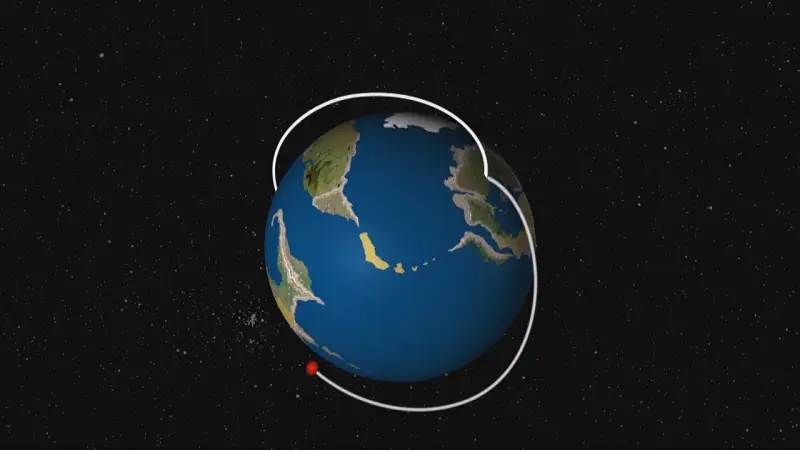
Global firing range demonstration
It is expected that the transition of units and formations of the Strategic Missile Forces to the new Sarmat complex will last several years and, possibly, will be completed by the end of the current decade. Thanks to this, the “heavy” component of the missile forces will be updated in all respects and will receive new capabilities. At the same time, the operation of light Yars missiles as part of silo and mobile complexes will continue.
The presence of complexes of different types with different characteristics and combat equipment will allow the Strategic Missile Forces to solve assigned tasks more efficiently and flexibly. All this will also have a positive impact on the potential of strategic nuclear forces as a whole.
The long-awaited result
Thus, the long and complex program for the development and adoption of a new missile system with a heavy Sarmat ICBM is entering its final stage. The industry has mastered mass production of new missiles and is supplying them to the troops, and the Strategic Missile Forces are putting them on combat duty. In the near future, the country's leadership promises to show new missiles in service.
Now the industry has to produce the required number of missiles and ensure full-scale rearmament of the Strategic Missile Forces. These processes will take several years, but their results are completely worth the wait and expense. The Strategic Missile Forces and all strategic nuclear forces will retain the high combat effectiveness necessary to ensure national security.
Information